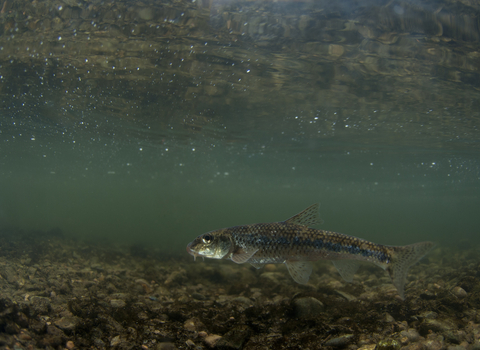
Gudgeon ©Jack Perks
Gudgeon
The gudgeon is a bottom-dwelling fish, similar to the stone loach, but with only two whisker-like barbels near its mouth. These sensory organs help it to find its prey in the sand and gravel of the riverbed.
Enw gwyddonol
Gobio gobioPryd i'w gweld
January to DecemberSpecies information
Category
Ystadegau
Length: 7-15cmWeight: 14-140g
Average Lifespan: 3-5 years
Common.
